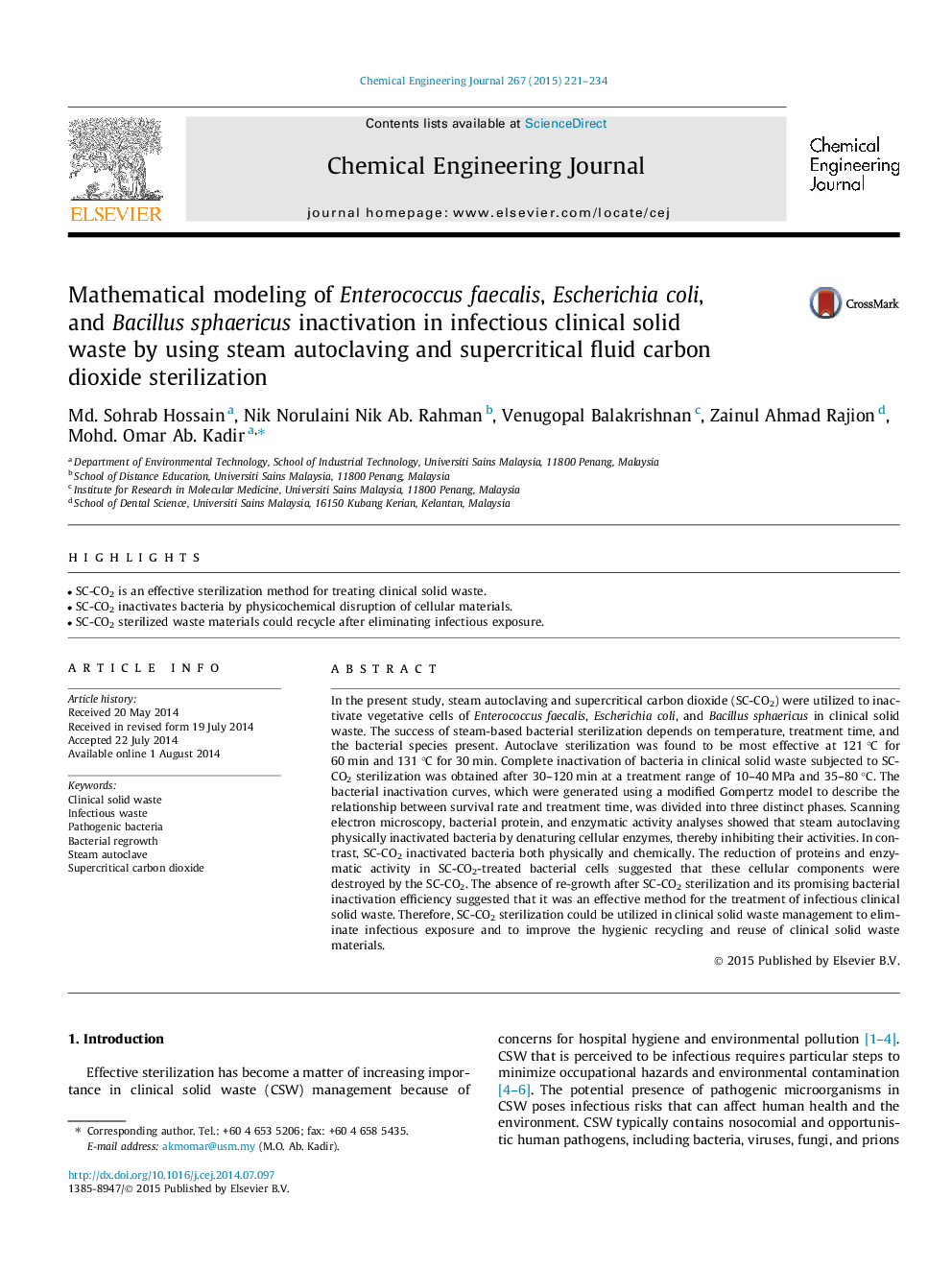| کد مقاله | کد نشریه | سال انتشار | مقاله انگلیسی | نسخه تمام متن |
|---|---|---|---|---|
| 146616 | 456374 | 2015 | 14 صفحه PDF | دانلود رایگان |

• SC-CO2 is an effective sterilization method for treating clinical solid waste.
• SC-CO2 inactivates bacteria by physicochemical disruption of cellular materials.
• SC-CO2 sterilized waste materials could recycle after eliminating infectious exposure.
In the present study, steam autoclaving and supercritical carbon dioxide (SC-CO2) were utilized to inactivate vegetative cells of Enterococcus faecalis, Escherichia coli, and Bacillus sphaericus in clinical solid waste. The success of steam-based bacterial sterilization depends on temperature, treatment time, and the bacterial species present. Autoclave sterilization was found to be most effective at 121 °C for 60 min and 131 °C for 30 min. Complete inactivation of bacteria in clinical solid waste subjected to SC-CO2 sterilization was obtained after 30–120 min at a treatment range of 10–40 MPa and 35–80 °C. The bacterial inactivation curves, which were generated using a modified Gompertz model to describe the relationship between survival rate and treatment time, was divided into three distinct phases. Scanning electron microscopy, bacterial protein, and enzymatic activity analyses showed that steam autoclaving physically inactivated bacteria by denaturing cellular enzymes, thereby inhibiting their activities. In contrast, SC-CO2 inactivated bacteria both physically and chemically. The reduction of proteins and enzymatic activity in SC-CO2-treated bacterial cells suggested that these cellular components were destroyed by the SC-CO2. The absence of re-growth after SC-CO2 sterilization and its promising bacterial inactivation efficiency suggested that it was an effective method for the treatment of infectious clinical solid waste. Therefore, SC-CO2 sterilization could be utilized in clinical solid waste management to eliminate infectious exposure and to improve the hygienic recycling and reuse of clinical solid waste materials.
Journal: Chemical Engineering Journal - Volume 267, 1 May 2015, Pages 221–234